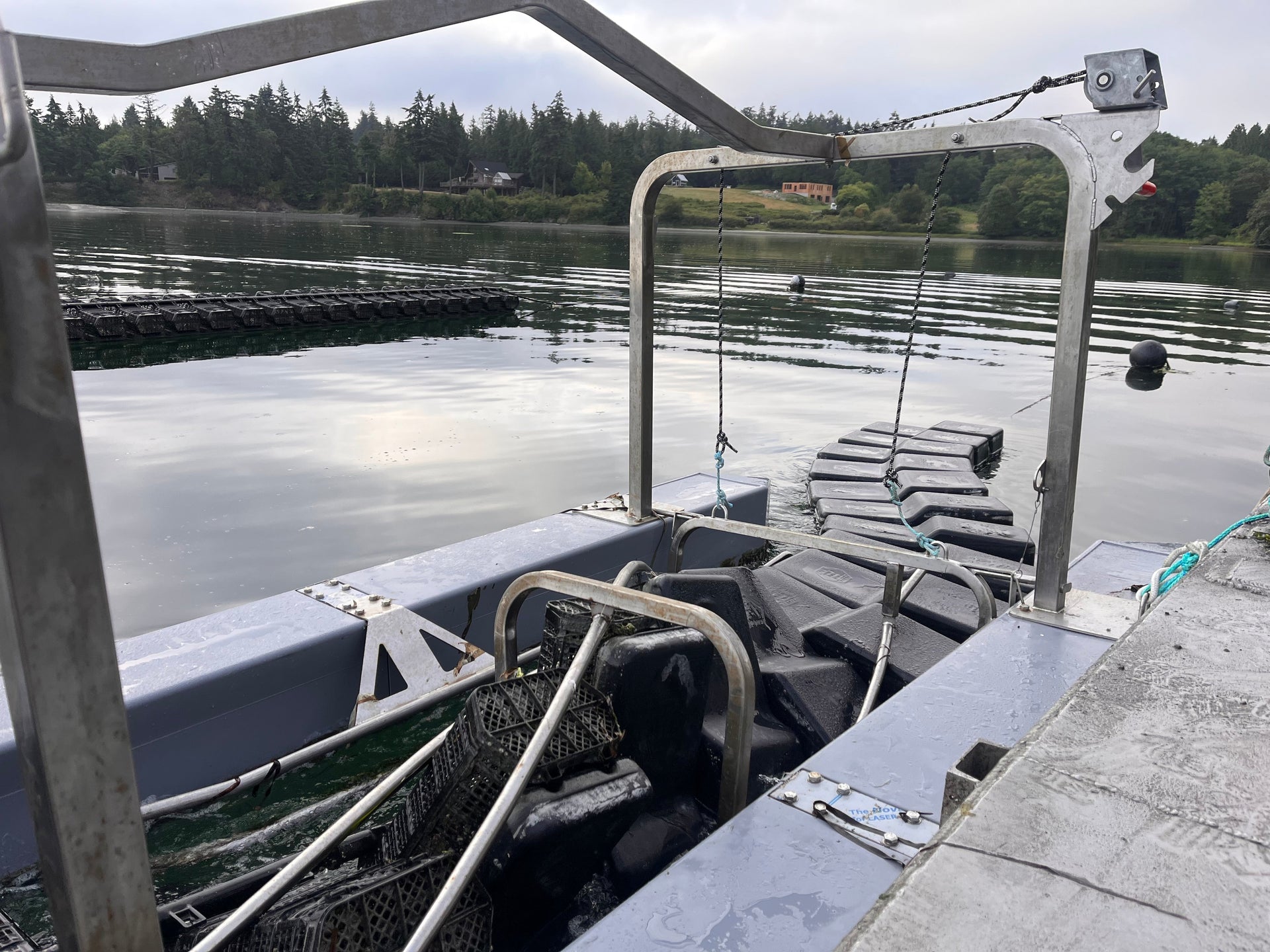How We Farm: the FlipFarm system


Compared to livestock agriculture, shellfish farming can look simple. There's nothing to feed morning and night, nothing to water, and no costly vet calls. As you may have heard us say before, all you need to grow delicious shellfish is sunlight and seawater.
Despite the obvious attractions of producing protein with very few inputs, shellfish require a farmer’s touch to cultivate well. We practice rotational grazing, of a sort, because we move seed between various cages and bags as it grows to ensure it has space to grow and access food. We do a ton of gear maintenance, try to avoid biofouling on our gear, and wash and sort seed several times a week. It's farming, not rocket science, but it includes science. We need to pay attention to water chemistry, seed genetics, and the geography of our planting locations.
All this to say: we're always on the hunt to make things easier. And this year we think we've hit the jackpot with some equipment from a New Zealand company called FlipFarm.
FlipFarm is a surface culture method (meaning the oysters float at the top of the water, rather than sitting on the beach or in the middle of the water column). This lets us maintain the gear and harvest oysters from a boat, so we are less dependent on the tide schedule. Oysters also have more to eat on the surface, because there’s more current and sunlight, which provides a buffet of algae to the oysters.
One of the niftiest things about the Flip Farm system is that it lets you flip the oysters from a boat, all at once, with the help of a helix. Flipping is important because it encourages the seed to develop a uniform shape, and time out of water is key to prevent barnacle and mussel growth in the equipment.
It also automates harvest via an attachment that moves the baskets out of the water – choo-choo train style – so they can be opened and dumped onto a conveyor belt that brings them up to the boat. This is a much easier way to move oysters around than by lugging them by hand or cart across a beach. This one piece of equipment is a back-saving marvel!

So far we've had great success using the FlipFarm system as a temporary grow out spot for oyster seed between the nursery and the farms. It also seems to be a great way to grow notoriously picky Kumamoto oysters, which usually take their sweet time growing on the beach.

If you're new to the concept of oyster farming, you may want to peruse our previous oyster musings on the FLUPSY (oyster seed production), our oyster farming ethos, a description of tumble farming, or how we used to farm, back in the day.
